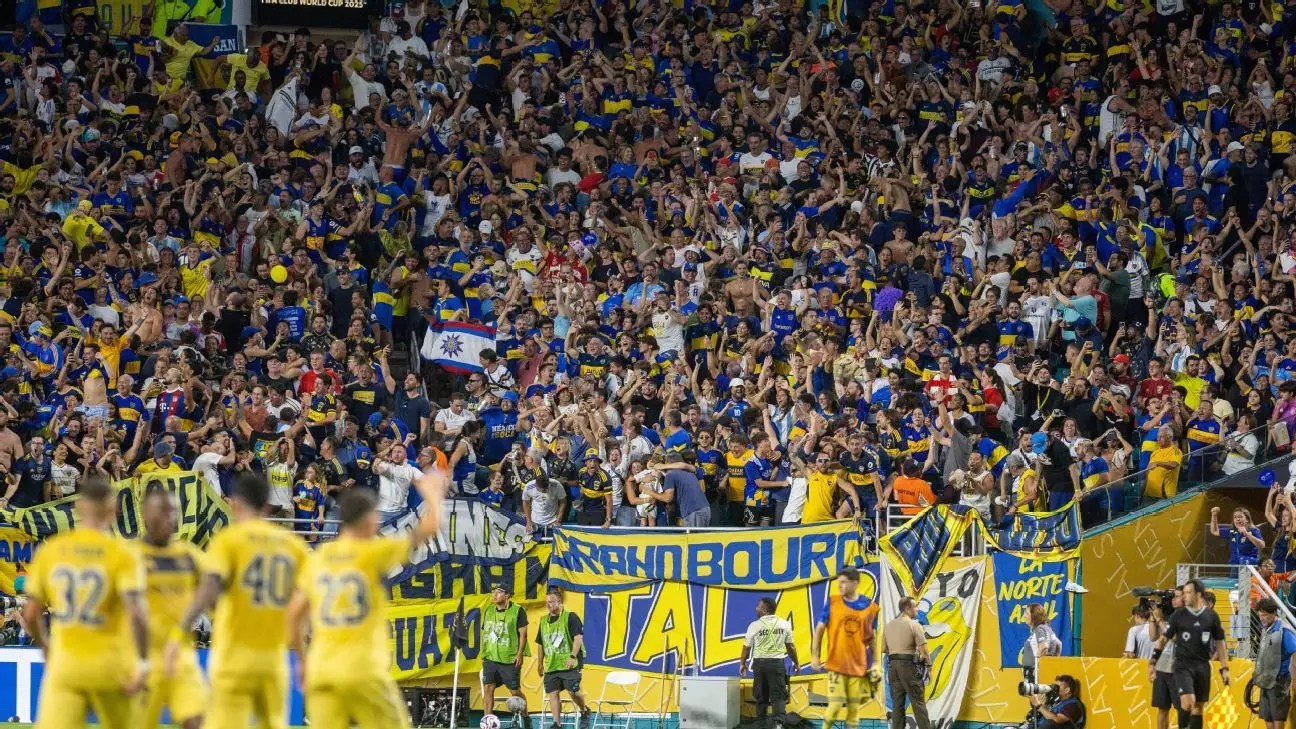The recent Club World Cup matches held in the United States have unveiled an unexpected but compelling glimpse into the burgeoning soccer culture present in the country. For years, soccer in the U.S. has played a secondary role behind sports like football, basketball, and baseball. However, the passion and intensity seen in venues filled with fervent fans — particularly those attending the Bayern Munich versus Boca Juniors match in South Florida — suggest a shift is well underway. Tobin Heath, an American soccer icon with a decorated international career, expressed genuine surprise and elation witnessing the fervor firsthand. Heath’s perspective carries weight; as someone whose own trajectory was sparked by the 1999 Women’s World Cup, she recognizes the power of a landmark event to ignite national enthusiasm. The Club World Cup, in her view, could serve as a comparable catalyst.
This percolation of intense soccer fandom challenges the long-held notion that soccer will remain a niche sport in America. Fans in a packed stadium created an electric atmosphere described as so intense the stadium was “literally shaking.” It’s hard to overstate the significance of this, as it marks a moment where soccer is no longer just a growing sport but one capable of stirring emotional, collective experiences traditionally reserved for American sports powerhouses.
Messi’s Magnetic Influence and the Sporting Landscape
One undeniable element amplifying this soccer revolution is Lionel Messi’s involvement with Major League Soccer’s Inter Miami. Though statistically Messi hasn’t dominated this particular tournament, his presence alone has immensely elevated the profile of Inter Miami, a relatively young franchise struggling to find its identity. According to Arsène Wenger, Messi’s arrival is pivotal; without him, Inter Miami might never have reached this knockout stage. This is a crucial point: star power can transcend numbers and results by far more effectively turbocharging a league’s visibility and appeal.
Messi’s arrival might be more than a mere sports headline; it symbolizes the merging of global soccer prestige with American sports entertainment culture. For soccer to truly embed itself within the U.S. mainstream, it needs magnets like Messi, capable of drawing fans who might otherwise remain indifferent. His match against Paris Saint-Germain, his former club, is more than a game — it’s a narrative charged with emotional and sporting intrigue, drawing diverse audience segments.
Broadcasting Complexities and Technical Insights
Behind the scenes, FIFA’s technical study group, including seasoned experts like Heath, Wenger, and Jurgen Klinsmann, meticulously analyze every facet of the matches. Their task is far from superficial observation; they dive into extensive data sets measuring everything from team recoveries post-turnover to sprint intensities at critical moments. This analytical approach reflects a deeper professionalism that underpins soccer’s evolving presence in the U.S.
The insights garnered here are more than academic; they offer a blueprint for development, helping U.S. organizers and coaches understand what drives success on the global stage. The rigor and depth of these reports signal a commitment to high standards, which parallels the effort needed to raise soccer’s domestic profile. It’s an implicit acknowledgment that passion alone isn’t enough — precise strategies and growth pathways must accompany the cultural shift.
Field Conditions: A Tangible Challenge
Despite the excitement, some tangible issues remain. European teams and coaches have voiced criticisms about pitch quality in U.S. venues, notably in Charlotte and Orlando, where field conditions did not meet the pristine standards found in European competitions. Borussia Dortmund’s coach Niko Kovac characterized surfaces as “soft” and slick, detracting somewhat from the quality of play.
This aspect can’t be dismissed lightly. The playing surface is a fundamental component of the game, influencing ball speed, player safety, and the overall style of play. However, FIFA’s promise to improve field conditions ahead of the 2026 World Cup in North America suggests that organizers are not only aware of these shortcomings but are actively addressing them. It’s a practical reminder that soccer’s rise in America must be matched by infrastructural investment, or cultural enthusiasm risks being undermined by subpar logistics.
A Dress Rehearsal for a Global Stage
More broadly, the ongoing Club World Cup acts as a critical dress rehearsal for what promises to be a historic 2026 World Cup hosted across the United States, Canada, and Mexico. The tournament is a testing ground for fan engagement, stadium readiness, and commercial viability. FIFA and local stakeholders are learning valuable lessons — both inspiring and cautionary.
The wide variance in attendance, from packed stands to near-empty locales, pinpoints the uneven soccer enthusiasm across regions and the challenges in cultivating consistent fan bases. Still, the general uptick seen in cities capable of drawing crowds signals that this is not a momentary blip but a genuine trend. Soccer’s foothold in the U.S. is strengthening, boosted by international talent influx, major event coverage, and grassroots passion reinvigorated by historic milestones.
By focusing on these intersections of culture, star power, analytics, and infrastructure, the evolving American soccer landscape is showing signs of unprecedented vitality. The U.S. is no longer purely a consumer of global soccer narratives but an increasingly influential participant, setting the stage for transformative moments in the sport’s domestic history.


Leave a Reply